Lawns in Florida and other southern areas often use St. Augustine grass because of its durability and attractive appearance. It thrives in wet, hot, and salty environments, making it a good choice for the subtropics and the seaside.
Moreover, this blue-green grass is renowned for creating a dense turf that grows faster than most grass types. But the question is how to plant St Augustine grass using plugs?
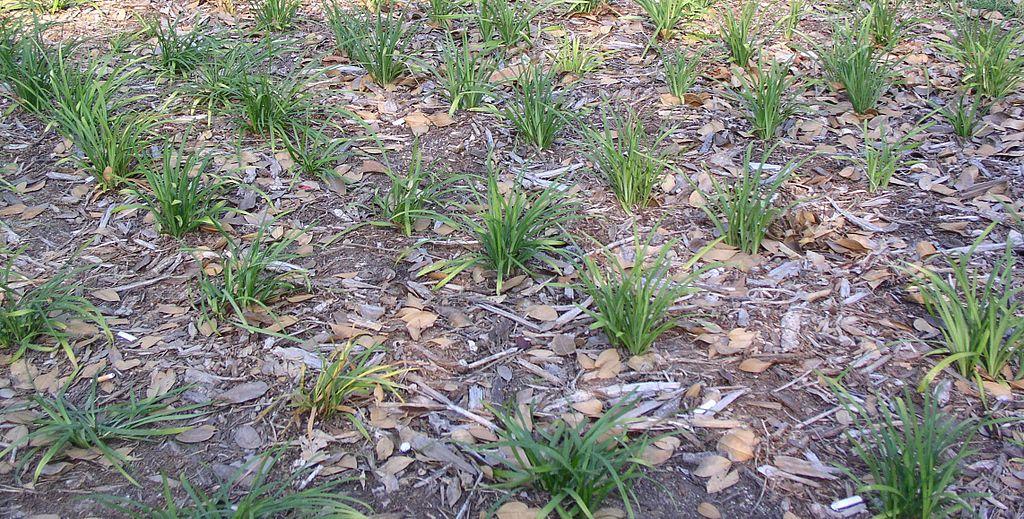
Grass plugs are useful for mending damaged lawn areas or establishing a new lawn when sod or seed is unavailable.
Putting in St. Augustine grass on your lawn is easy if you use plugs of already-grown grass. However, is it worth it? Continue reading to find out!
Grass plugs are used for two primary purposes: repairing damaged portions of your lawn and starting a lawn from scratch when seeding or sodding is not an option.
However, establishing a St. Augustine lawn is quite pricey, to be honest, when done with sod, and planting a St. Augustine grass lawn from seeds is typically not recommended!
Here’s when a few plugs of St. Augustine grass come in handy!
Plugs of St. Augustine grass, which are rooted fragments of sod, eventually fill up the spaces between them to create a lush, lovely lawn. Plugs are suitable for tiny areas or when the homeowner isn’t in a hurry to create a lawn.
On average, it can take about six to twelve months to fill the space completely. However, the method is still cheaper than using sod and quicker than establishing grass from seeds.
So, if planting plugs sounds like something you want to try, read on! We will tell you everything about planting St. Augustine grass plugs and caring for them.
Where Can You Buy St. Augustine Grass Plugs?

Palmetto is more shade-, cold-, frost-, heat-, and drought-tolerant than other St. Augustine grass cultivars.
Depending on where you live, you might be able to easily get your hands on St. Augustine grass plugs at your local nursery and gardening store. These local shops will also have far more knowledgeable individuals available to respond to any inquiries that you might have.
However, if you have trouble locating St. Augustine grass plugs locally, you can always try to get them online. Plugs of St. Augustine grass are typically packaged for sale in trays, and based on the vendor, a single tray could hold as many as 72 individual plugs.
In addition, a single tray can efficiently cover an area of 50 to 60 square feet.
Therefore, if you want a lawn that is 1000 square feet in size, you will need to place an order for approximately 20 St. Augustine grass plug trays.
These grass plugs are totally natural and are sent directly from the farm. Also, each plug has been carefully cultivated to have a fully formed root system, much like your lawn, so you do not need to worry about the health of your shipment.
Here are the links to online stores where you can buy St. Augustine grass plugs:
Related: Why Is My St. Augustine Grass Turning Yellow | Possible Causes & Easy Fixes
Preparing Your Own St. Augustine Grass Plugs
You can save money by making your own St. Augustine plugs if you are willing to put in a bit of effort. This could really come in handy if you want to fix bare patches on your existing St. Augustine grass turf.
Take grass from a location on your lawn that is not easily seen or from a place where there is a lot of grass to avoid aesthetic damage to your lawn.
Next, insert the sod plugger in the soil, turn it counterclockwise, and then lift it up. You can make your own plugs by using garden shears or shovels to chop chunks of sod into the correct size and shape.
However, make sure to dig at least two to four inches deep into the ground and take out the entire root system along with the soil.
During removal, ensure that grass roots are not exposed to open air. After that, you will need to relocate these self-made plugs to different parts of your lawn, for instance, in bare spots. Next, dig some holes in the grass plugs and put some dirt or sand in them.
It is strongly recommended that you don’t utilize potting soil mixtures as they have a high percentage of organic matter in them. To minimize recognizable turf injury, expand the plug spacing. Spacing plug holes a bit apart also helps the yard heal faster.
Ideal Time To Plant St. Augustine Grass Plugs

Since St. Augustine grass flourishes in heat, the perfect time to plant sod or plugs is in spring and summer.
The warm weather of spring and summer, when high temperatures often range from 80 to 100 degrees Fahrenheit, is ideal for the growth of St. Augustine grass. Therefore, the latter part of spring or the beginning of summer is the ideal time to plant St. Augustine plugs.
However, if you start a bit later in the summer than you had planned, it is probably still okay to put in the plugs. Just remember to plant the St. Augustine grass plugs at least three months prior to the first fall frost that is typically expected in your location so that the grass has plenty of time to establish itself.
It is also essential to bring to your attention that planting St. Augustine grass plugs during the summer may not be the best idea.
The reason being, grass plugs require more frequent watering to prevent drying out in the summer. Furthermore, overwatering your grass plugs might provide ideal conditions for grass diseases and fungi to take hold.
So, to sum everything up, if you want the best results, planting your St. Augustine grass plugs in the spring is the time to do it.
St. Augustine Grass Plugs Installation Types

St. Augustine grass plugs spread proportionally to their installation spacing.
You may want to swiftly establish a St. Augustine lawn, depending on your requirements and goals for your yard.
The rate at which your St. Augustine grass plugs will spread is directly proportional to your plug installation spacing strategy, which is covered in this next section.
Low-Density Plug Installation
This option requires a spacing of between 13 and 24 inches, and it is ideal for lawns that see a low amount of foot traffic because when the spacing is so broad, it takes some time for St. Augustine plugs to stretch out over the entire yard completely.
St. Augustine grass often requires well over a year to mature to the point where it may spread out and completely cover an average-sized backyard lawn.
Typical Density Plug Installation
For this particular density option, the St. Augustine grass plugs need to be placed somewhere between 12 and 18 inches apart from one another.
When compared to low-density plug installation, St. Augustine grass plugs will spread more quickly, and you’ll have to wait less time for bare places to fill up when planted at this density.
It may take anywhere from eight to ten months for it to fill in completely. However, because you will need to utilize more plugs to cover your entire lawn, this installation method will be more expensive than the low-density plug installation method.
High-Density Plug Installation
This method demands a distance of 6 and 11 inches between the plugs. If you use this strategy, you should, on average, have a completely filled-in lawn within six to eight months.
Also, keep in mind that your chances of achieving a rapid fill-in are increased when the roots of the plants can extract sufficient nutrients from the soil.
So, keep your lawn well-fed and well-watered when opting for this installation method.
Related: Dethatching St. Augustine Grass: A Complete Step By Step Guide
How To Plant St. Augustine Grass Plugs?
Now that you know what St. Augustine grass is, how it grows, where it thrives, what its needs are, and when is the prefect time to plant it. Let’s go ahead and take a look at the process of planting St. Augustine grass correctly for a lush and thick lawn.
Test The Lawn Soil
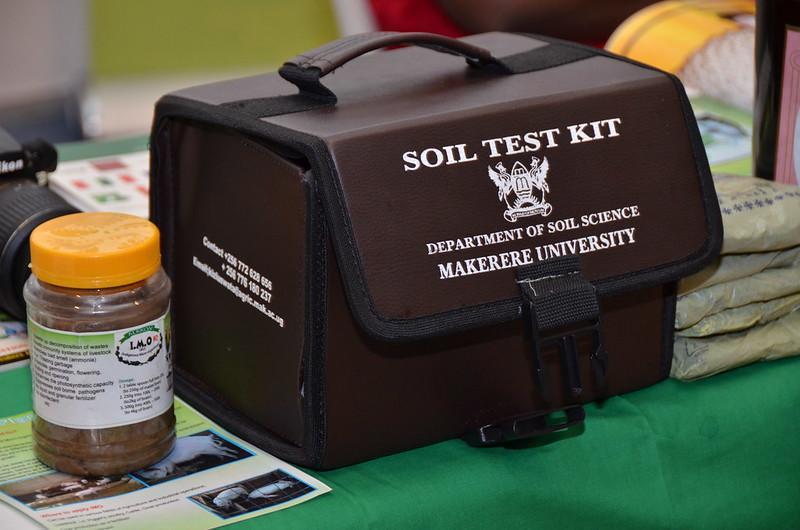
Soil analysis can reveal hidden factors that contribute to a lawn’s production and aesthetic appeal.
The condition of your soil is the most important factor in determining the overall health of your grass. Therefore, if you want to plant grass plugs across your entire lawn, you should first get your lawn’s soil tested.
This step needs to be completed before applying any pesticides, such as glyphosate, to kill the existing grass and before beginning the installation of plugs.
Take a handful of soil from your lawn and bring it to a local extension agent so they can examine it. The cost of doing a soil test and analyzing the results in a laboratory is relatively low. However, the process takes approximately two weeks to complete.
It is important to keep this time in mind before putting sod so that you have adequate time to see results and identify what it is that your soil requires.
The service that performs the soil test will also provide recommendations regarding the quantity, type, and pH increase your grass needs. If the soil on your lawn has the appropriate pH and nutrients, your grass will be able to develop normally and quickly.
Measure The Yard

Determine how many St. Augustine grass plugs you need by measuring the size of your lawn.
As was mentioned before, grass plugs are typically sold in trays. And since you’ll have to go out and buy grass plugs, it’s a good idea first to determine the exact dimensions of your lawn.
Taking measurements of the area where you wish to plant will assist you in determining the number of plugs you will need to purchase from your supplier.
The installation spacing is another factor that will determine how many plugs you need to order for the project. So, keep that in mind as well. The distance between grass plugs is critical since it dictates how long it will take for the grass to cover the entire lawn.
It will take longer for the plugs to grow together if the spacing is increased.
There are many internet tools you may use to figure out the size of your lawn. Another method is to measure the area by using a tape measure. However, also consider places with driveways, shrubs, sidewalks, trees, or other landscaping features.
Related: How to Manage St. Augustine Grass Runners: A Comprehensive Guide
Prepare The Soil
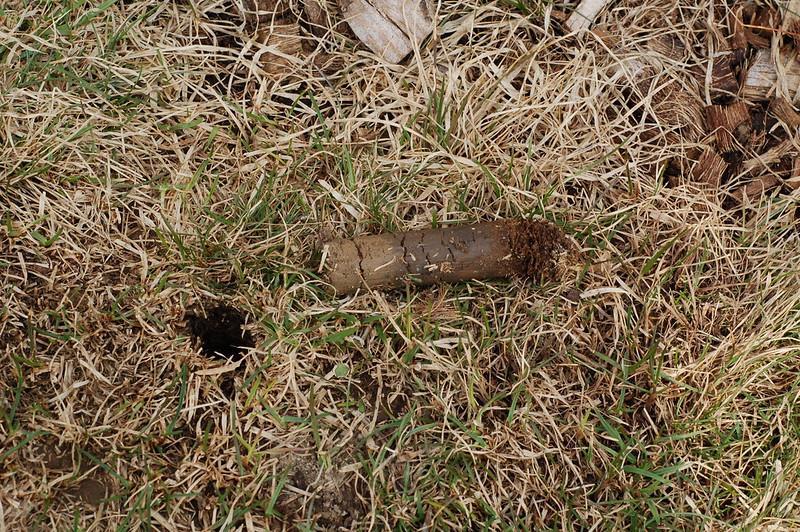
If the soil is compacted, use a tiller; otherwise, use a garden rake to prepare the soil for grass plugs.
The next stage is to prepare your soil and drill holes into the ground in order to plant the grass plugs. Always take the time to adequately prepare the soil before installing your grass plugs.
The first step in getting the soil ready for planting plugs is to clear the area of any dead plant matter and thatch that may be present. Then, use a tiller to loosen the soil if it is compacted; however, if it is too loose, use a rake instead.
An all-vegetation herbicide can also be applied to eradicate grass and weeds. However, if you use a herbicide, you must wait two weeks for it to evaporate before continuing. Also, check the drainage and correct any issues you find to stop water from pooling on your lawn.
Make a mark in the soil using spray paint to indicate where you want to put the St. Augustine grass plugs. After that, you will need to use a drill to dig small pits for the grass plugs.
Don’t drill too deeply, as the grass plugs’ tops need to sit flush with the soil. Depending on your preference, you can drill the plug holes in a grid or checkerboard design.
Water The Planting Area

Watering your lawn before adding grass plugs will encourage faster growth.
After you have finished digging the holes, give the area a good soaking with water. You should irrigate the ground until it is completely soaked. However, take care not to saturate the area with water so much that water pools or stands still in the pits.
If you water your lawn before putting grass plugs, the moisture will reach the roots of the grass plugs, which will encourage faster development.
Add Fertilizer

Fertilizer encourages robust root systems by nourishing new plugs.
According to our experts, the next best course of action is to fill the holes with a starting fertilizer. Choose a fertilizer that can supply the essential nutrients your soil may be lacking in accordance with the findings of the soil test you ought to have gotten by this point.
By supplying the newly planted grass plugs with nutrients like phosphorus, potassium, and carbon, the function of fertilizer is to encourage the development of healthy root systems.
Plant The Grass Plugs
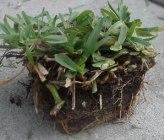
Roots should be covered, gaps repaired, and crowns allowed to breathe.
Next, plant the plugs. Put the plugs in the holes one after the other, and then press the dirt around them firmly to ensure that there is adequate contact between the plugs and the soil.
The base of the grass blades should be level with the ground. If the holes are far deeper than they should be, the extra area can be filled with nutrient-rich soil.
A good covering should be placed over the roots, gaps should be filled up, and the crowns should be allowed to breathe fresh air. In the end, give the plugs another drink of water. Make sure to completely water the soil without creating any pools of water.
Aftercare
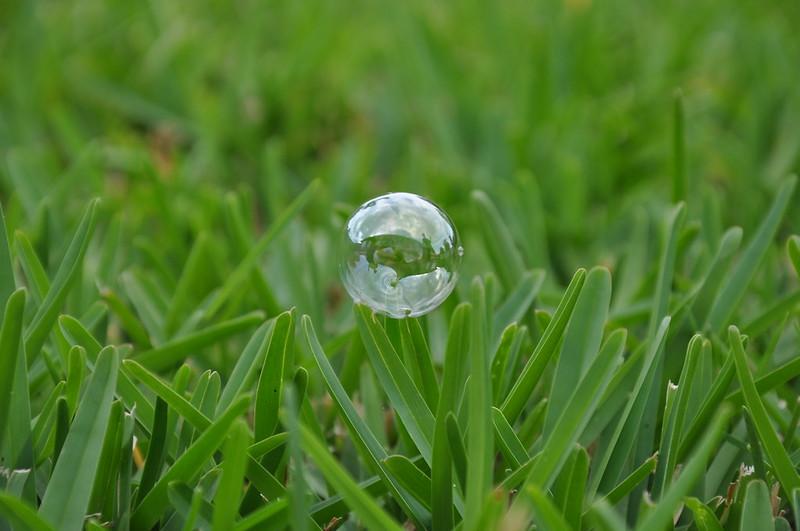
Follow all the above instructions, and soon you’ll have a lush, green, thick St. Augustine lawn.
Maintain a consistent watering schedule for your newly planted grass plugs over the fourteen days. This will assist in the roots being solid and stable in the soil they are growing in.
At this point, you ought to also notice that fresh runners are emerging. As soon as this has been verified, you can reduce your watering frequency to twice a week.
In addition to that, pull weeds as quickly as you can. The presence of weeds in your lawn will prevent it from growing to its full potential because weeds compete with grass for available resources.
Also, when you notice that the grass plugs have started to sprout, sprinkle a little amount of your starter fertilizer into the uppermost two to three inches of topsoil.
Final Thoughts
St. Augustine grass is an excellent option for homeowners who live in places that receive a lot of sunlight, particularly in the state of Florida. This grass is simple to manage and takes very little time to become established. Also, the plugs of St. Augustine grass are an excellent method for filling up barren and dead places in your lawn.
Your yard can be simply renovated with plugs if you just take a few precautions and have some time. It will not only make your neighbors green with envy, but also you can complete the project for a tenth of the cost of laying sod.
Frequently Asked Questions
Do St Augustine plugs work?
Plugs of St. Augustine grass are an excellent choice for patching up bald or otherwise unattractive areas of your lawn. You can even establish a new lawn from scratch with the help of St. Augustine grass plugs. Not only will it make your neighbors green with envy, but you can complete the project for a tenth of the cost of laying sod.
How long do St Augustine plugs take to grow?
It usually takes 7 to 14 days for newly planted plugs of St. Augustine grass to begin spreading after they have established deep roots in the soil. However, St. Augustine and Zoysia plugs will take approximately a year to grow in the yard fully. The Bermuda grass plugs establish themselves a little bit more rapidly.
Will St Augustine grass plugs spread?
St. Augustine “spreads” as it grows. After being planted, plugs of St. Augustine grass will quickly spread. As a result, you can rely on plugs to fill up any sparse areas in your lawn. This distinctive growth pattern is made possible by stolons, which move just above the soil.
How far apart should St Augustine grass plugs be planted?
St. Augustine grass plugs require a 12-inch gap between their respective holes. On the other hand, high-density plug installations necessitate a distance of 6 to 8 inches between individual sprigs. This is the minimal distance that enables each plug to have enough area for healthy growth, and it should be maintained between rows.
Will St. Augustine grass fill in bare spots?
St. Augustine grass plugs need around 7 to 14 days to start spreading and filling in the bare places in your lawn. It can take up to two weeks for the roots of newly installed plugs to grow to the point where they are able to anchor the plugs to the ground firmly.
Sources for Further Reading
St. Augustine grass Lawns – Alabama Cooperative Extension System. (2022). Retrieved 9 October 2022, from https://www.aces.edu/blog/topics/lawn-garden/st-augustinegrass-lawns/
Healthy Lawns & Planting turf: Establishing a lawn from sprigs, stolons, or plugs. (2022). Retrieved 9 October 2022, from http://ipm.ucanr.edu/TOOLS/TURF/SITEPREP/sprigs.html
St. Augustine grass Yearly Maintenance Program. (2022). Clemson Cooperative Extension. Retrieved 9 October 2022, from https://hgic.clemson.edu/factsheet/st-augustinegrass-maintenance-calendar/
Editor’s Recommendations
How To Revive St. Augustine Grass | Why Is My St. Augustine Dying
Sevin Dust 101: How To Use Sevin Dust To Control Pests, and Is It Safe?







